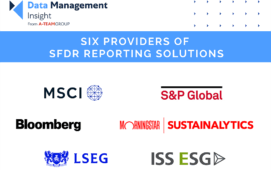By: Steven Strange, Buy-Side Product Manager, Fidessa
In late 2015, the U.S. Securities & Exchange Commission proposed a new rule designed to regulate the use of derivatives by registered investment companies. Rule 18f-4, as it is known, would affect the way derivatives and related assets are included into the portfolios of mutual funds, ETFs, and closed-ended funds, as well as business development companies. Many of these funds use derivatives to leverage their portfolios as part of a broader investment strategy, and a change in the way derivatives are classified, traded and tracked for risk management purposes could have a considerable operational impact on workflow. Fortunately, from a technology perspective, the capability already exists to handle any regulatory changes that may ultimately be enacted—regardless of their final form and scope.
There has been very little movement around a 2015 SEC proposal to limit the way funds handle derivatives in their portfolios. When Rule 18f-4 was first proposed 14 months ago, it was intended to protect investors by reducing derivatives-related risk across a broad variety of fund classes. Among other mandates, the original proposal sought to augment funds’ overall level of risk exposure by enacting tighter capital controls and more stringent recordkeeping requirements.
The subsequent comment period yielded a number of criticisms, such as the calculation of risk exposure based on the total gross notional values of overall derivatives position—ignoring, as critics say, the market risk values associated with each individual holding. Another perceived shortcoming is that the original rule doesn’t take hedging into account—treating it in the same way as more speculative activities.
The SEC has undertaken additional analysis based on the comments received thus far and has indicated that it understands the importance of using more nuanced, risk-adjusted measures based on underlying assets to calculate funds’ total risk exposures. (These values could be applied uniformly and consistently, commenters say, employing standardised schedules used in other regulatory processes.)
Whatever form Rule 18f-4 ultimately takes, some have wondered about the cost and complexity of adapting trading platforms to comply with the new regulation. It is unlikely that this will be a serious issue for fund companies. For one thing, the buy-side tends to be very receptive to increasing technology investment so long as it helps drive fund performance. What’s more, the technological framework already exists to accommodate the SEC’s final ruling on derivatives–thus it should be fairly easy for firms to adapt to any changes that come down the line.
That said, there are a few specific technological considerations worth mentioning:
- Asset Segregation Functionality – A new approach would introduce a framework in which portfolio derivatives constraints would need to be monitored based on the SEC’s updated standards. This would most likely affect existing Asset Segregation responsibilities, as new monitoring would need to account for such requirements as part of tighter risk management controls.
- Using Existing Risk Measures – The SEC’s analysis suggests that the proposed rule could be more in line with risk-based adjustments and standardised schedules already in use for other purposes. For example, calculations might not be dissimilar to those used for VaR, UCITS Hedging and AIFMD Leverage calculations. Buy-side platforms that support these calculations, such as Fidessa Sentinel, have been around for years and already enjoy widespread use in the industry.
- Costs Offset by Existing Investment – Of course, there will be a cost to technology implementation, though this will be largely offset by the fact that much of the functionality needed to comply with the SEC’s final determination is already out there. In most cases, upgrades would likely require only a small amount of tweaking to make feasible. The industry has made huge investments in derivatives and valuation technologies in recent years, and these could be leveraged to support the new rule.
Whatever the look and feel of the SEC’s derivatives rule, those with a compliance framework already in place will be well equipped to handle it. That said, a new U.S. political administration—one that is committed to dramatically remaking financial regulation—means that it could be awhile before we know what the final rule will look like. In the wake of outgoing leadership at the SEC (Mary Jo White) and CFTC (Timothy Massad), derivatives regulation, in particular, could be an area of intense debate. In any case, we expect that the rule will continue to be analysed in coming weeks, with key stakeholders contributing new commentary ahead of inevitable leadership changes.
Subscribe to our newsletter




